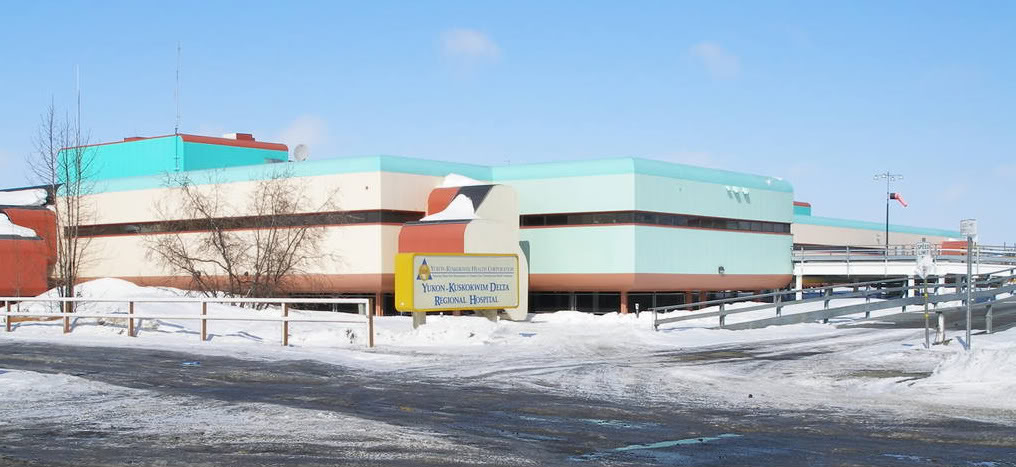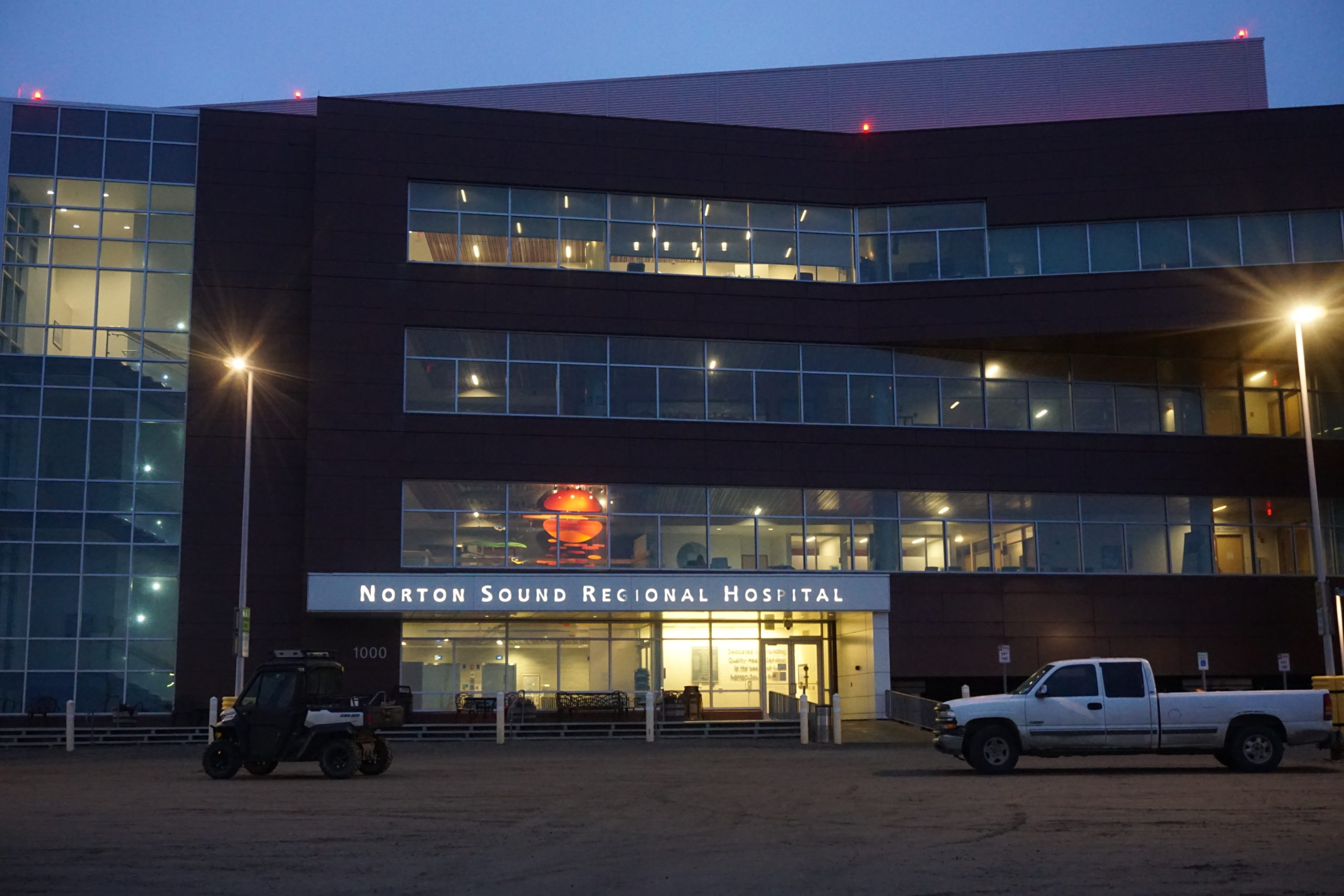Despite early prevention measures, COVID-19 is hitting hard in some parts of rural Alaska
The Yukon-Kuskokwim Delta and Northwest Alaska — which includes the North Slope and Bering Straits region — had the state's highest infection rates.

Last spring, when the coronavirus pandemic was new to North America, Alaska Native communities kept infections away by strictly limiting travel, requiring quarantines, mandating mask use and imposing other safety rules.
Despite those early efforts, which were driven by scarcity of modern medical facilities and past experiences with epidemics that were devastating to Alaska Natives, COVID-19 arrived in rural Alaska, and outbreaks in many areas there are now severe.
Health officials warned this week that more steps are needed to protect vulnerable rural Alaskans, most of them Indigenous.
“Alaska has not fared well in previous pandemics, particularly rural Alaska and Alaska Natives. So in the end we’ll be judged by these outcomes,” Dr. Robert Onders, interim administrator of the Alaska Native Medical Center, said in a hearing held Tuesday by the state House Health and Social Services Committee.
Even in the relatively recent H1N1 influenza epidemic of 2009, Alaska Natives suffered disproportionately high rates of infection, morbidity and mortality, he said.
“That’s extremely concerning to me and it’s sad that we’re headed in that same direction again now,” Onders told lawmakers.

As of Oct. 22, the region with Alaska’s highest infection rate — 62.17 cases per 100,000 people — was the Yukon-Kuskokwim Delta in the southwestern part of the state, according to the Alaska Department of Health and Social Services.
The region is home to about 23,000 people, most of them Yup’ik, living in the regional hub of Bethel and in dozens of smaller communities, none of which are connected by road.
On Wednesday, 92 new cases were reported in the region, the Yukon-Kuskokwim Health Corp. said, and over the three days from Tuesday to Thursday the region’s new-case total was 237. Earlier in the week, the YKHC warned about a “dramatic surge” in cases, and as of Wednesday, there had been two deaths in the week. Particularly hard hit was the village of Chevak, home to about 1,000 people, the YKHC said. There were 51 new cases in Chevak reported as of Wednesday, with 38 more there on Thursday. the tribal health organization reported.
Medical services are being strained by the “exponential increase in cases” in the region, Dr. Ellen Hodges, YKHC chief of staff, said in testimony at the Tuesday hearing.
Since the hospital in Bethel, the regional hub, has no intensive care unit, patients with the most serious cases have to be evacuated to bigger cities, she said. That causes problems for all patients, whether battling COVID or not, she said.
Several weeks ago, she had a COVID patient who waited more than 19 hours in the hospital emergency room for an ICU bed to open up in an urban hospital, she said. Another non-COVID patient waited in the emergency room for 18 hours before being transferred to an ICU in Fairbanks, she said.
The heavy COVID caseload bodes ill for other important services that are likely to be needed more as winter sets in, Hodges said. Last winter, for example, the Yukon-Kuskokwim region had the worst outbreak of Respiratory Syncytial Virus (RSV) in several decades, she said. The respiratory disease mostly affects infants and young children and has been a persistent problem in rural Alaska, especially the Yukon-Kuskokwim region.
Last year, there were so many Yukon-Kuskokwim patients transferred to Anchorage that they exceeded the city’s pediatric ICU capacity, she said.
“This is in the absence of any other outbreaks in the state,” she told lawmakers. “And with the number of cases that we’ve seen increasing, I assume we’ll start seeing hospitalizations, which are a lagging indicator, increasing over the next few weeks, and ultimately deaths if there’s not intervention done immediately.”
Lack of sanitation infrastructure exacerbates COVID risks in the region, Hodges said. About 60 percent of the region’s households lack running water or sewer service, she told a state legislative committee on Tuesday. “You might imagine that if you had to pack every single ounce of water into your home to use it for handwashing, it might decrease the number of times you wash your hands,” she said at the legislative hearing. “Before the pandemic, this was a public health crisis in our region with that sort of thing. With the added burden of quarantine, you might imagine that it’s difficult to go out and get your own water when your family has been placed in quarantine.”
The second-highest infection rate is northwestern Alaska, a mostly Inupiat region, with a rate of 35.41 per 100,000 people as of Thursday. For the state’s COVID dashboard, the northwest region encompasses the North Slope, the Chukchi Sea region and the Bering Strait region.
Rising case rates in Utqiagvik, the Alaska’s farthest-north community, prompted North Slope Borough Mayor Harry Brower to issue a “hunker down” order that requires all residents to stay home, except for essential needs, and to wear masks when outside of the home. The order is in effect until Nov. 2.
In the Bering Strait region, small outlying villages have imposed new rules in response to COVID outbreaks. The village of Stebbins, with a population of 600, had tallied 34 cases as of Wednesday, though that number includes patients who have recovered, the Norton Sound Health Corp. reported. Village officials have closed access to public buildings there and are encouraging residents to “hunker down” and stay at home, the Norton Sound Health Corp. said.
Anchorage, Alaska’s largest city, remains one of the centers of the pandemic in Alaska, with an infection rate of 34.88 per 100,000 people as of Thursday, the third-highest regional rate, according to state officials.
The situation is different across the border in Canada’s Yukon Territory, which has a population of about 35,000. There, just 17 people have tested positive since the pandemic began, according to the territorial government.
All of Canada, including Yukon, had imposed strict rules to prevent the spread of COVID-19, barring non-essential travel from the U.S. through Nov. 21, among other steps.
As of Oct. 21, the Yukon government had lifted some of its restrictions, allowing travel there by Canadians from elsewhere in the country and full dine-in service at restaurants, for example. But it maintained a requirement for visitors to self-isolate and has issued citations violators of that rule.
Yukon Premier Sandy Silver said his government continues to communicate with officials in neighboring jurisdictions, including Alaska.
“These conversations are extremely important so that we can continue to share new information and maintain a coordinated response to the pandemic,” Silver said in a briefing on Wednesday.
Silver acknowledged that Yukoners might be worried about outbreaks across the border in Alaska and elsewhere, but he urged them to be respectful of travelers who are legally passing through the territory. He said he was “very disappointed” to learn about a case of Alaska-bound travelers who had a vehicle window smashed while they were staying at a hotel.
“This kind of behavior is unacceptable,” he said.